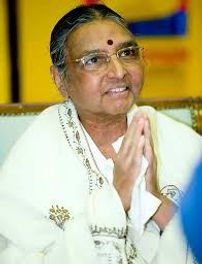
What is Iyengar Yoga
“Yoga is a light, which once lit, will never dim.
The better your practice, the brighter the flame.”
Iyengar Yoga is a system of Hatha yoga developed by BKS Iyengar and brought to the US in the 1960’s. Iyengar yoga is appropriate for all levels of students. Beginners are very welcome, and no prior yoga experience is necessary.
B.K.S. Iyengar (1918-2014) is responsible for codifying a system or style of practicing Yoga that makes sense and creates an environment and access to the traditional transformative way of practicing Yoga by brilliantly utilizing everyday objects like chairs, belts and straps, blocks, planks, benches to provide sustained support and structure to those who otherwise could not do the practice. His application of ‘props’ has been highly developed to educate the body so it is able to reach its greatest health potential and progress inwardly to the Self. He was taught by his brother-in-law, T. Krishnamacharya. Through his own rigorous and attentive practice and self-study he overcame many obstacles in life and began to help others with theirs. He is the author of the seminal book, Light on Yoga, which has been in print continuously since 1966.
Iyengar’s Yoga awakens and strengthens the body, enhances health, improves one’s mobility, and supports healing. Over time Iyengar Yoga balances your emotions, helps experience comfort and joy, setting a person firmly in oneself in all aspects. Iyengar Yoga is a powerful and sophisticated discipline which can be practiced in all stages of life. The benefits are far-reaching and will assist the practitioner in every aspect of daily living.
The Yoga of Guruji B.K.S. Iyengar is a dynamic and recognized by the attention to practicing Yoga with absolute attention, accuracy and awareness. Practicing with this attention cultivates being in the present moment with yourself. Regular practice in this manner creates the ideal benefit to the organic body that triggers the internal response for transformation and healing. Being present, being aware and doing Yoga with this ‘alignment’ dramatically influence a person’s daily activities in an ethical, accurate and clear frame of mind. For Guruji Iyengar, Yoga is a spiritual tradition that does not include putting oneself in extreme conditions to withdraw from the world around you; it is a practice of how you are amongst others. Your practice of Self exploration through postures (asanas), Pranayama (breath), Mantra intermingle with your walking in the world fully awake.
Distinguishing Characteristics of Iyengar
-
Accessible-Iyengar Yoga is accessible to anyone.
-
Regular practice increases suppleness, strength and stamina, improves posture and concentration and quietens the mind to promote well-being
-
Has High Teaching Standards
-
Safe
-
Progressive
-
Balanced
-
Use of Props
-
Integrated mental and physical practice
.png)
All Iyengar Yoga teachers are trained to provide clear demonstrations of each posture and are skilled in the use of adapting the practice for those who are in front of them. Teachers undergo rigorous and thorough program of training lasting years. Teachers continue their studies throughout their careers and have a regular home practice.
The Iyengar Yoga emphasizes precision and alignment. Quality of movement is offered over quantity. Students learn to move with ease in their body while working within your capacity. This makes the Yoga postures (asanas) accessible.
Yoga Props such as blankets, blocks and belts may be used to access to the practice. Every prop was created to find help a person receive the effect or the feeling of the posture to release the effort or difficulty of the Asana.
The teacher teaches that the practice is gradual and progressive, building a stable foundation before attempting more demanding work. Beginners start with standing Yoga poses and are gradually introduced to a range of sitting and reclining Yoga postures, forward extensions, inversions, twists, back-bends and arm balances. Teachers guide students to move inward to the deeper layers of mind, energy and sense of being to find vitality, clarity and peace.
.png)
Each group of Yoga postures develops the body in different yet reciprocal ways and has different qualities: grounding, energizing, strengthening, stimulating, calming. Yoga Classes at all levels devote time to relaxation. Once the body and mind are strong enough to sit or lie for extended periods without distraction, students learn Pranayama (Yogic breathing). No Yoga classes are the same: teachers select poses to emphasize the various aspects of the practice and their effects.
Iyengar Yoga has been described as meditation in action. Practicing the Yoga postures with awareness has an integrating effect and works to harmonize mind and body. For more information, please visit bksiyengar.com.



